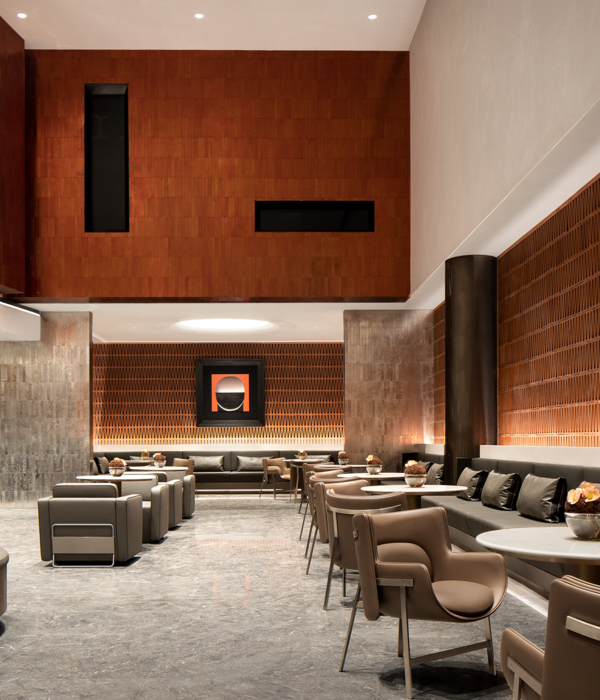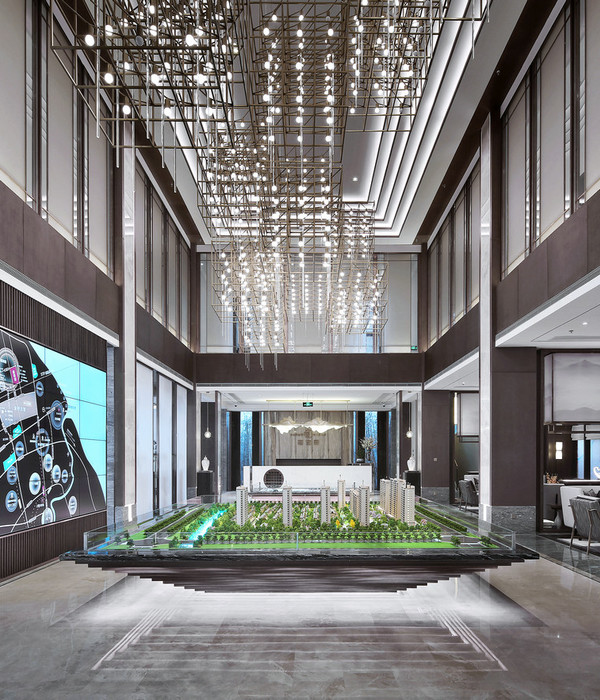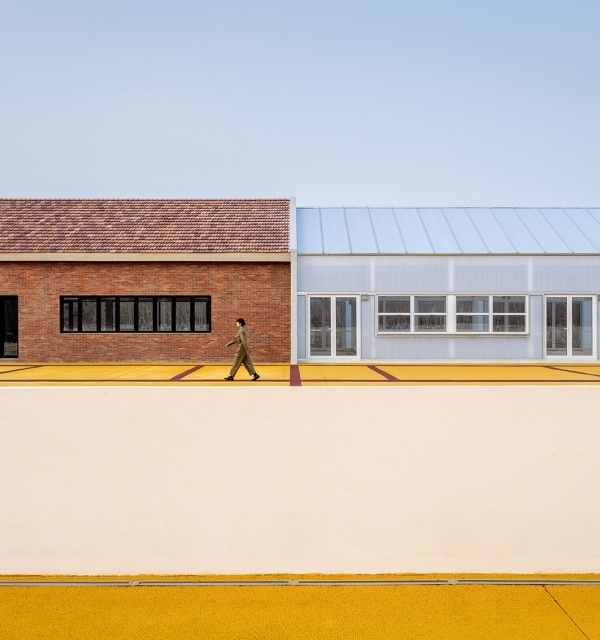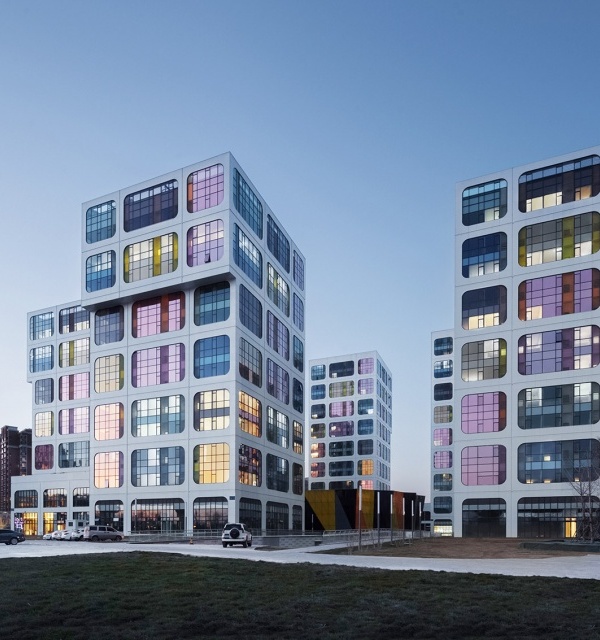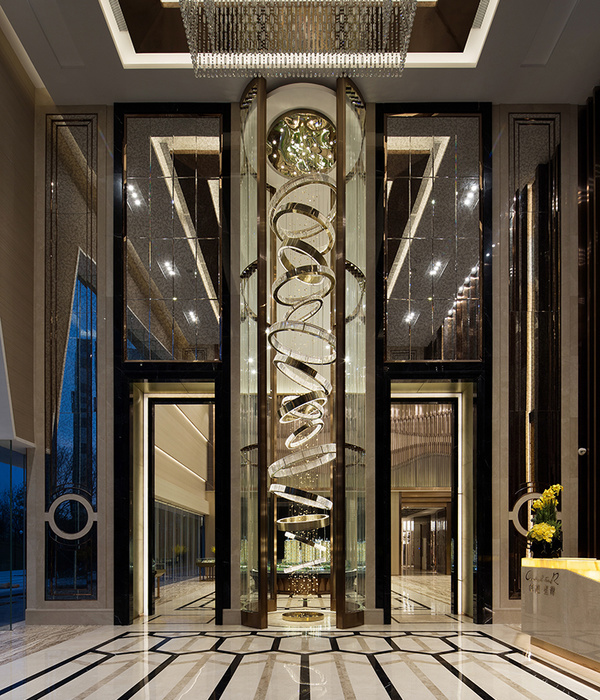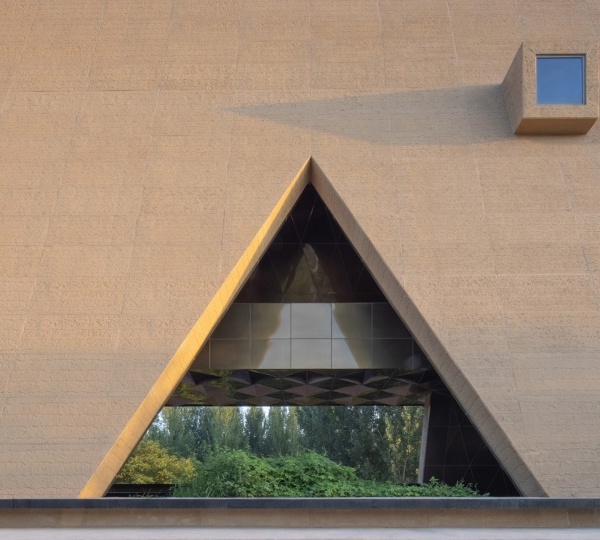Architects:Amelia Tavella Architectes
Area:2300m²
Year:2023
Photographs:Thibaut Dini
Manufacturers:Gesso /,Halfen,Oty Light,ROCAMAT,ROCKWOOL,Regent,Soprema
Lead Architect:Amelia Tavella
Engineering:Quadriplus Groupe
Landscape Architects:Christophe Gautrand & Associés
City:Cabriès
Country:France
Text description provided by the architects. The building seems simple: a mineral terrace architecture extending mainly over a single floor, in the hollow of the valley which protects like a mother. As if emerging from the earth and then disappearing, crawling like a snake, it bears the imprint of the stone, its strata, and its identity, which claims an influence on the students: Knowing where we come from and understanding what we are. The building becomes like a fossil building which would have pre-existed and yet never been seen before, matching the surrounding site which seems to look at it without seeing it: Both will watch over each other in secret.
Practicing her profession like an art, Amelia Tavella cannot dissociate the place of knowledge from beauty. To evoke beauty is to evoke that of a space that has become a familiar territory intended for learning, but it is also to evoke the whole that surrounds this space: The great Landscape that must neither be betrayed nor forgotten. Without ever departing from morality, the architect builds with a poetic ethic, because we never separate a building from what preceded it: its origin.
Superposition of two plateaus, the tiers of the school organize the symbolism of an increase in knowledge and age: the nursery school is at the bottom nestled in the lap of the valley, while the elementary school, overlooked by the village, look at the horizon, that of the fields. The vegetation covers all the roofs, surrounds the setting, acts like an invasion, and in turn educates young souls. Constantly designed in connection with the village that overlooks it, the houses that face it, and the steep topography of the Piton, the Auguste Benoît school is a line that protects. An alley mimics Rue Saint-Pierre which it runs alongside and extends. This in-between keeps at a distance the building which seems to hide and fade away so as to never break the horizon, nor prevent the simple glance towards what is further away than oneself.
No escape is impossible. The gaze circulates, and the view is free. The buried python cannot be seen, contorting itself to better hide itself and follow the contour lines. When it shows itself and reveals itself, it is by opening onto the city, recreating the social bond, a still sacred mission of knowledge, thanks to modular spaces offered to residents. Considering the school also as a place of exchange dedicated to the community outside of school hours, Amelia Tavella proposes to broaden its vocation, in particular by making its motor skills room a scenic space open to the neighborhood. It thus becomes an amphitheater for the duration of a reading or a concert.
Project gallery
Project location
Address:Cabriès, France
{{item.text_origin}}

